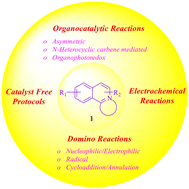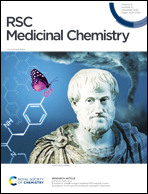Diversely functionalized isoquinolines and their core-embedded heterocyclic frameworks: a privileged scaffold for medicinal chemistry†
Abstract
Isoquinoline-enrooted organic small-molecules represent a challenging molecular target in the organic synthesis arsenal attributed to their structural diversity and therapeutic importance. Into the bargain, isoquinolines are significant structural frameworks in modern medicinal chemistry and drug development. Consequently, synthetic organic and medicinal chemists have been intensely interested in efficient synthetic tactics for the sustainable construction of isoquinoline frameworks and their derivatives in enantiopure or racemic forms. This review accentuates an overview of the literature on the modern synthetic approaches exploited in synthesising isoquinolines and their core embedded heterocyclic skeletons from 2021 to 2022. In detail, the methodologies and inspected pharmacological studies for the array of diversely functionalized isoquinolines or their core-embedded heterocyclic/carbocyclic structures involving the introduction of substituents at C-1, C-3, and C-4 carbon and N-2 atom, bond constructions at the C1–N2 atom and C3–N2 atom, and structural scaffolding within isoquinoline compounds have been reviewed. This intensive study highlights the need for and relevance of relatively unexplored bioisosterism employing isoquinoline-based small-molecules in drug design.



 Please wait while we load your content...
Please wait while we load your content...